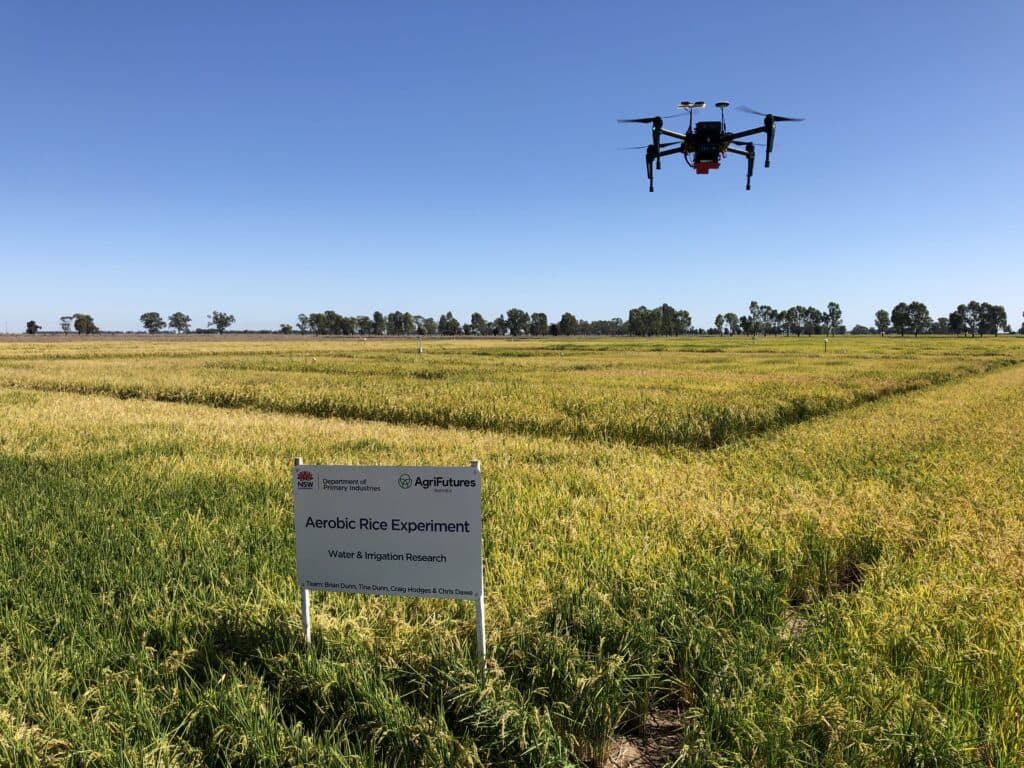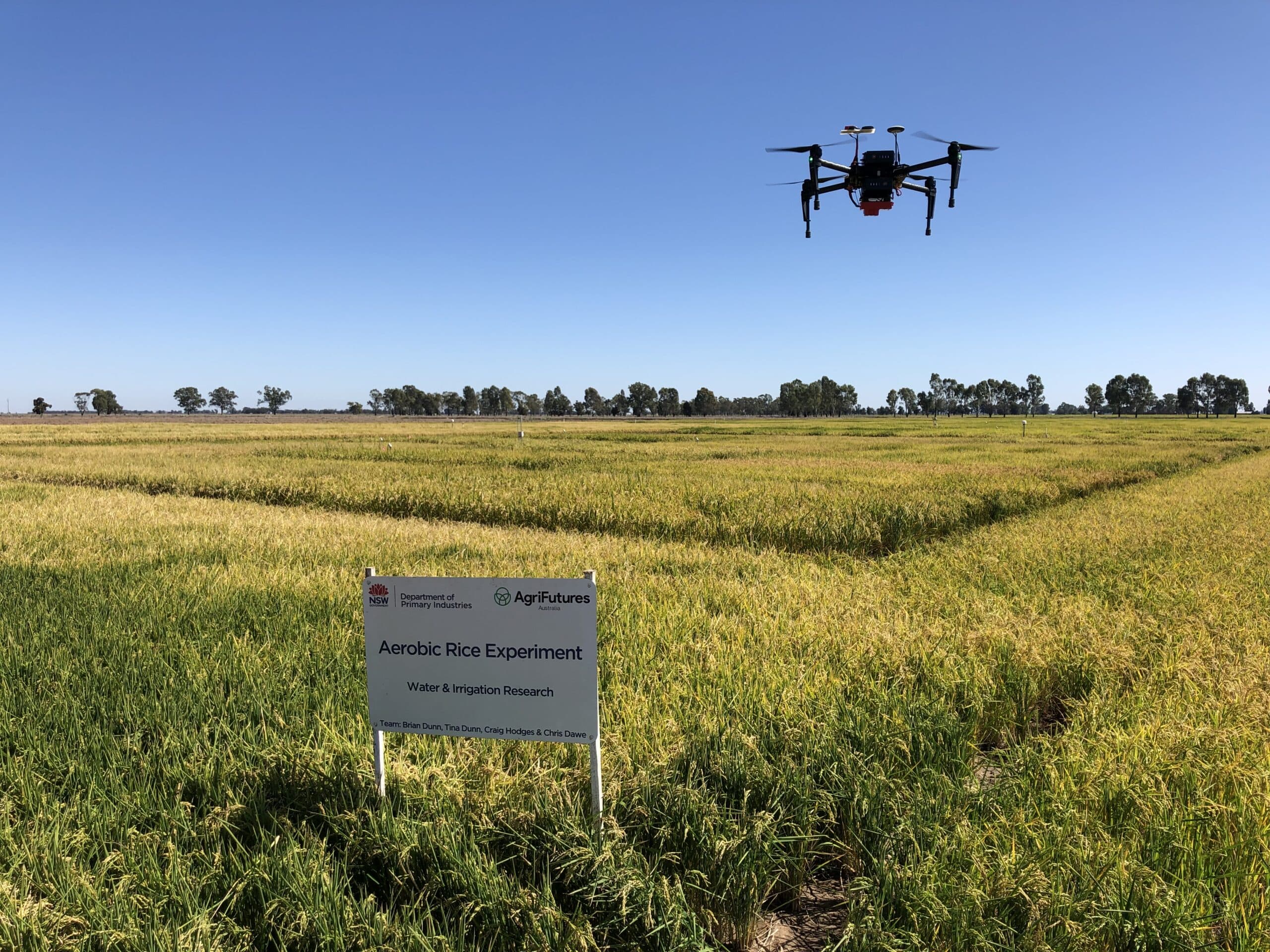When the Rice Variety Nitrogen and Agronomic Management Project was first funded by the AgriFutures Rice Program in 2015, there was little data supporting the agronomics of growing different rice varieties and this advice was based on aerial sowing.
Many growers experienced economic setbacks due to the lack of access to relevant agronomic information on new varieties, prompting AgriFutures Rice Program and NSW Department of Primary Industries (NSW DPI) to invest in research and development (R&D) aimed at filling the rice agronomy research gap.
“The overall aim realistically was to maximise the water productivity of rice growing,” said Brian Dunn, NSW DPI Research Agronomist.
“We’ve looked at a number of facets – one is improving the management of the varieties so the timing of their sowing, the nitrogen rates and timing of nitrogen so you’re maximising yield. We also considered the way the crop is grown. For example, if it was aerial sown, drill sown or drill sown with delayed permanent water.”
Six years later, the industry now has robust, data driven recommendations for eleven rice varieties, and a better understanding of how the different sowing methods can impact growers’ profitability.
Extensive research fine tunes growing practices
61 experiments were conducted across the rice growing regions of southern New South Wales from 2015 – 2021, in the Murray and Murrumbidgee Valleys, including sites at the Yanco Agricultural Institute, Leeton Field Station and Rice Research Australia (RRAPL).
A minimum of six experiments were conducted each season, with three in each valley.
As a result, the project has delivered agronomic and nitrogen management guidelines for all current rice varieties, and for all sowing methods and water management practices – to support the production of high yielding, low-risk rice crops.
Bunnaloo rice grower Antony Vagg was among the group of growers involved in on-farm trials. Antony found that the results and resources developed through the project have assisted him to refine sowing times and scheduling for nitrogen applications.
“Rice is actually relatively easy to grow. But it’s not that easy to grow a really good rice crop,” said Antony.
“There’s been a little bit of guesswork for growers, what’s worked and what hasn’t. Whereas now, as a result of R&D, we have a good, detailed guide to grow a successful rice crop. If you follow these steps, you’ve got a very good opportunity to produce a quality crop.”












